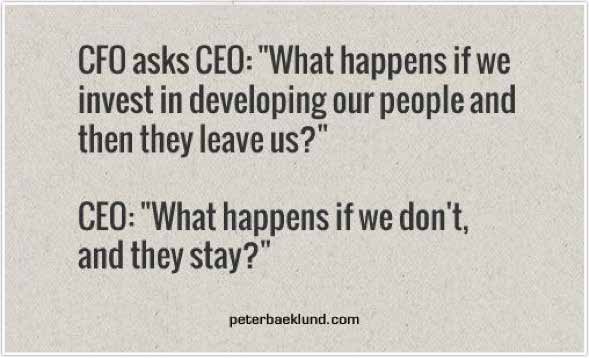Four Tips to Improve Your Channel Program
By: Peter Radizeski
![[excerpt from ChannelVision May-June 2017]](https://channelvisionmag.com/wp-content/uploads/2017/06/CV_MayJune-2017_Cover_300.png)
The first line of offense in your program is your channel manager. When was the last time you trained them on more than a product? These people are the conduit to your company for the channel. Many are the only interaction that both customers and partners will have with your company. Don’t you want to invest in them? Invest in your employees with some personal development or sales training. If they are recruiting partners, shouldn’t there be some training around mission, partner profile, message and more?
It isn’t about more traffic to the funnel; it’s about better traffic – more qualified traffic – in the funnel. Next it is about increasing the close ratio. Target and message better; then close more. All are skills that can be learned and improved with some training.
The tech industry is seeing more companies that have only two sales channels – indirect partners and online. In several cases, the inbound leads are being fed to the channel partners. This is a no-brainer for a channel partner. “You are going to give me leads? And no channel conflict? Yes, please! Sign me up!”
Even hosted VoIP companies are starting to feed leads to channel partners. How would a VoIP company that doesn’t offer leads compete? There are so many hosted VoIP providers in the U.S. that any advantage is needed. That can be a higher SPIFF or providing leads.

GENBAND has a marketing automation program (called the Channel Marketing and Management Platform) that is powered by Zift Solutions to assist partners in promoting GENBAND-powered technology and services. This system consists of customized collateral content that GENBAND created, social media syndication, email campaigns and analytics. The partners have to upload their lists to the system and the rest is automated. This will help partners with lead generation. It isn’t as easy as handing them leads, but it is much better than no help with lead generation. (This program allows GENBAND to control the message as well.)
Another program element is coselling. Telcos (most notably Qwest, Verizon Wireless and AT&T) have gone through periods when co-selling with direct sales reps and channel partners was encouraged. (There were also periods where it was not allowed.) Coselling can be an expensive prospect (paying two sales reps for each order). This is a rather directed approach to sales however.
In co-selling your brand and team are represented to the customer. You are paired with the partner on this opportunity. Channel managers often don’t get to interact with the end user (customer). There isn’t a chance for the vendor to directly pitch the customer. Co-selling averts that. It also puts the competition at a disadvantage.
Co-selling also provides the bonus of not just the company represented but the extra layer of the partner and the value that she brings to the table. This can be installation, design, expertise or some other component. It can be more compelling to the customer.
The final element is “compensation.” For partners, compensation is an important revenue stream for the business. Some programs offer one-time upfront payment. Other programs have a SPIFF coupled with monthly recurring commission based on the billing revenue. A few programs are just straight commission on the billing revenue for the term of the original contract. Partners look at a variety of factors in the partner compensation model: how much, how long, quota, ramp, evergreen and the gotchas. The gotchas are those onerous clauses in the contract (such as “terminate for convenience”) or channel conflict without deal registration.
We live in a pretty transparent world, where commission rates are not as secretive as people would like to think. Keep that in mind when making a deal with one partner over another. It won’t stay secret for long.
The last tip is to listen to your partners. There are advisory groups and other avenues to interface with partners, but actively listening to them is significant. Most often they will talk about the friction in the relationship. Where are the bugs in the system? What are customers saying about your service or your company or your support? How much friction is there in doing business with you? In what areas can doing business with you get easier? Here are several places that may have snags: quoting, deal registration, channel conflict, site surveys, getting all of the paperwork for a sale, collecting commissions, partner training and getting paid. Those factors don’t include the customer facing items such as installation, billing, CPE and customer care.
Compensation, co-selling, channel manager training and lead generation are just four tips that could improve your channel program in the wake of the competition in the industry. Nothing beats having an exclusive service that customers want, but that isn’t the case. So try to be as easy to do business with as possible. Don’t make it hard to give you sales. Make the partner want to do business with you.
This digital article is sponsored by: LSI
VIEW ARTICLE
VIEW FULL ISSUE
About ChannelVision Magazine:
ChannelVision is a bi-monthly digital and print magazine, read by channel partners selling all manner of voice, data, access, managed and business services (both on premise and “in the cloud”), as well as, technology, gear, and equipment. ChannelVision is a highly focused and efficient way for service providers, hardware, and software companies to reach experienced channel partners targeting the small/medium business space. Serving a controlled circulation of providers and indirect distributors of communications, network, IT and cloud-based business services, ChannelVision is telecom’s gateway perspective on how to adapt, what to sell, and how to sell it.












